73: Fakes, forgeries and Tax Evasion
When there are oficial taxes to pay, people will find a way to avoid paying them - often illegally.
Some years ago I wrote a survey of the fake packs known to me at that time for The Playing Card (Vol. 40, 2012). This page is an update of the material presented there and expanded into a consideration of other ways of avoiding the duty on cards. As usual, I will concentrate on standard English packs, though I have no doubt there are examples of all kinds of design that could be considered from many different countries. (See also page 40 for a brief discussion of design copies and fakes.)
We have to distinguish between mere copies of a design, even very close ones, and fakes. The former have some kind of distinguishing mark, such as a different ace of spades or redrawn courts, but the latter were meant to be the original and therefore to cheat someone, mostly the tax collectors. Oddly enough, in my experience the close copies of court designs are much more convincing than the fraudulent attempts to deceive. There are some modern Chinese examples, where it's difficult to know whether they are legitimate products or an attempt to cash in on a well-known brand name. In addition, I should mention the matter of reproductions, some of which, sadly, are presented as the genuine article. In this case the target is the collector, not the taxman.
In England the tax was collected by the maker buying the ace of spades for each pack from the appropriate government tax office and it became more and more expensive as the eighteenth turned into the nineteenth century, so the temptation to avoid the tax must have been quite strong in some quarters. There were various ways in which the tax could be dodged. Legal export aces, which cost nothing, could have the word Exportation scratched out and put in packs for home consumption; the corners could be cut off a whole pack rendering them technically waste and a hand-made ace of spades could be provided; second-hand cards could be sold illegally, avoiding the tax on even reused cards. The real act of forgery, though, was to make one’s own ace of spades. This was done by at least two legitimate card-makers in England: Harding (1805) and Henry Wheeler (1836). The proceedings of the trials can be read at www/nationalarchive.gov.uk. The former made fake aces with his own name on and also packs purporting to be by Blanchard. These are particularly interesting because the courts are genuine, but the ace is printed from a wood block. It is odd that the old courts should be used, as their style was out of date by 1805 and the size was not the same as the standard cards of the period.

A fake Blanchard AS with genuine Blanchard courts (possibly by Harding).
The pack below with a Harding AS was in Sylvia Mann’s collection and it is unclear whether the ace is in fact forged, though it does look suspect. The courts, on the other hand, look like genuine Type II courts of the period (1801-05).

There are several different fake ASs, though they all have the number 59 as the die number. The examples below are from Sylvia Mann’s collection and Paul Bostock’s website (A14), which are both different from the one illustrated above and at least the lettering at the bottom is different on each of them (for instance, note the lack of a bar on the first A on the left-hand example). Several aces could have been carved on one block.


In Belgium they were much more careless of trying to replicate the originals. There are two different attempts at Blanchard, one at Gibson & Gisborne and two at Hunt. Two of these were printed from wood blocks with the ace of spades on the same sheet as the courts. There is an example of a Blanchard and a Gibson & Gisborne in the Turnhout Playing Card Museum.
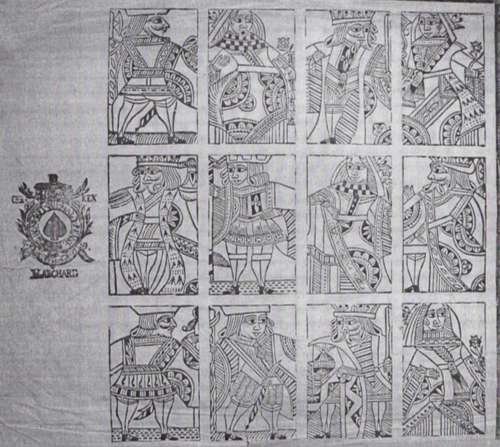
Blanchard fake 2
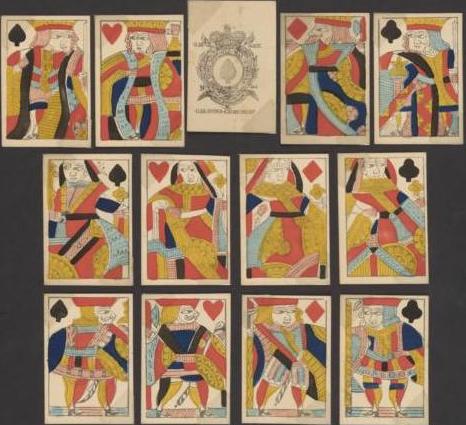
Gibson & Gisborne fake
There's another Blanchard fake with different courts, but it still has No.59 on the AS.

Blanchard fake 3
Now let's consider the Hunt fakes. The first one has the ace of spades with the continental IIII instead of IV, and number 23 as the die number, and Type II courts, which were rarely used by Hunt and certainly not ones like these.
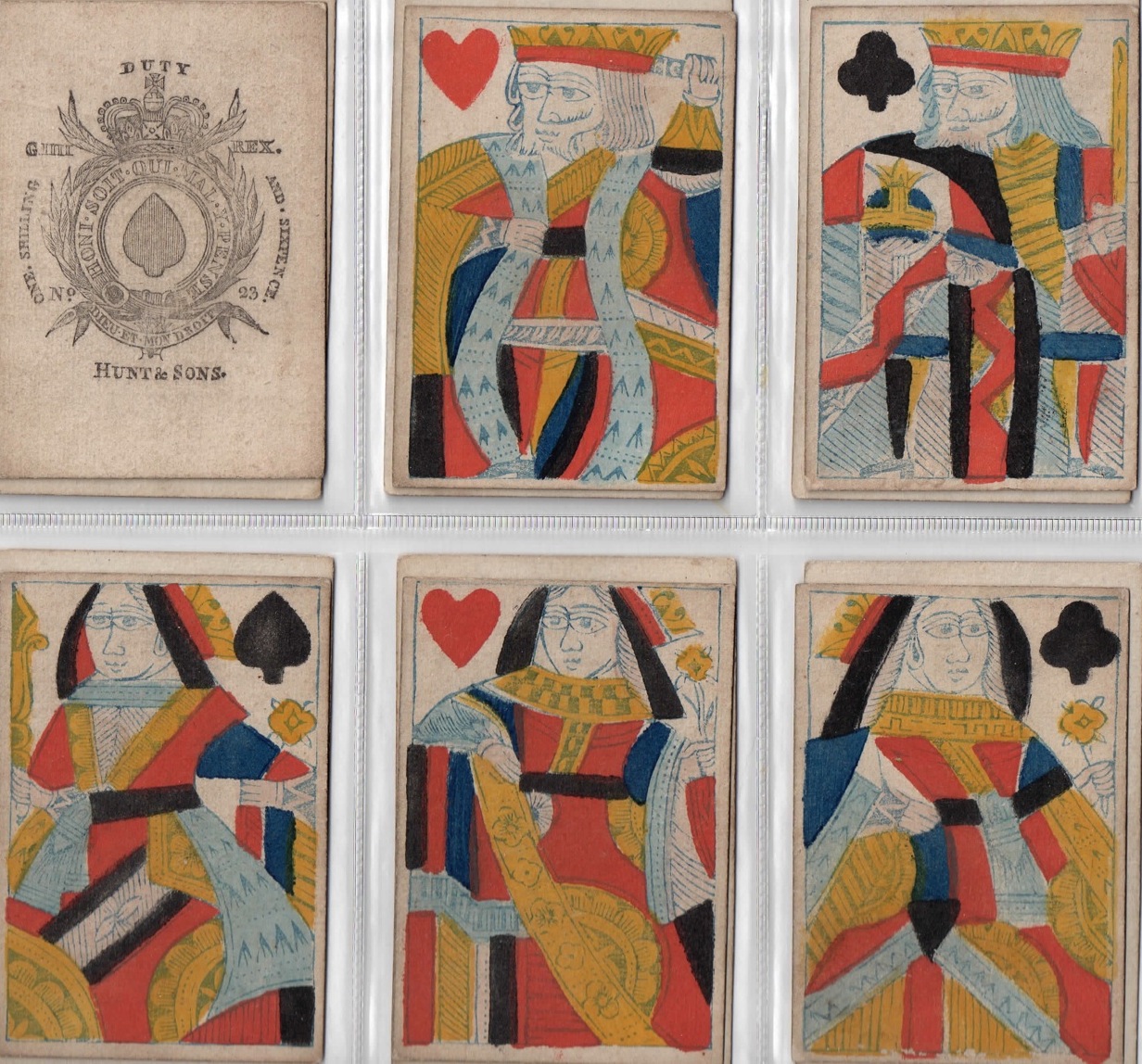
Hunt fake 1
The other one looks like a tongue-in-cheek, fingers-on-nose snub to the British tax authorities. Whether it was intended as a retaliation to Hunt’s complaints to the British authorities about fake packs from Belgium bearing his name we shall never know, but it certainly doesn’t look like a very serious attempt to fool anyone. The courts are once again a redrawing of the goggle-eyed grotesques based on Stone’s/Creswick's design, so nothing like Hunt’s cards. The number cards are double-ended, which may suggest a later date than the garter ace implies. But the real joke is in the drawing of the AS. Not only is the monogram at the top left GIID, but there’s a bird under the garter at the bottom. Not much of an attempt at a serious fake there! I illustrate the courts and details of the AS.



Hunt fake 2
Some time ago a pack sold by Cartorama was probably an example of a fake pack by Henry Wheeler. The court cards are the same as in a genuine Wheeler Old Frizzle pack I have, but the AS has a Wheeler Ludlow design with the name changed to Hunt. By the time H. Wheeler was making cards, Hunt was styled as Hunt & Sons. Furthermore, the cards have a consistent all-over back design. It looks as though Henry was using up old T.Wheeler Ludlow AS, several years after they were used in the Ludlow packs, but decided to put a different maker's name on them for some reason. So this is an example of a genuine AS that has been illegally altered.


I have another example of what seems to be an altered genuine AS, which also seems to have its origins in Belgium.
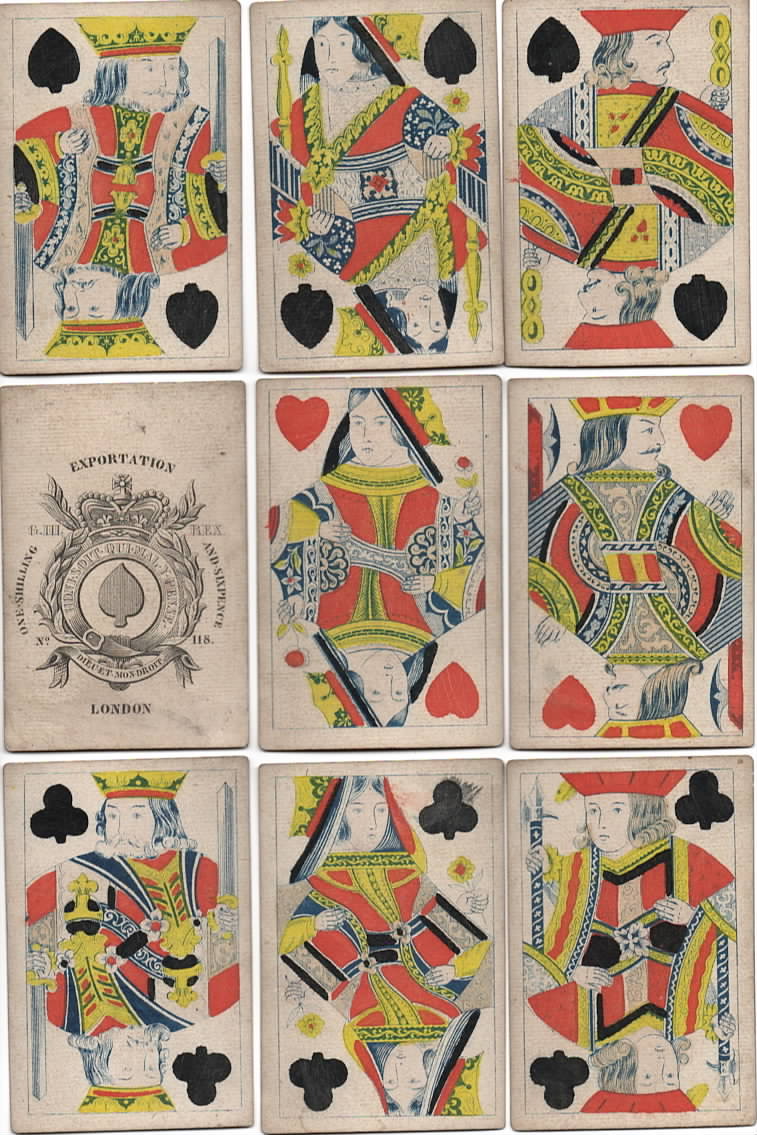
In this case the AS has been altered top and bottom, but it has been used with much later courts, which bear quite a resemblance to those of Mesmaekers. Double-ended courts and a Garter AS is an odd combination, especially as they must be from 1860 onwards. (Gustaaf Mesmaekers lived in London from 1865 until 1886, when he died.)
Wheeler seems to have made some of his own metal-engraved plates for his ASs. There are a couple of examples on plainbacks and the one below, which I discuss in a recent EPCS article. However, it isn't clear that the latter example is actually by Wheeler, because, whereas the plainbacks aces look like real examples except for the name, the cards themselves are smaller than the English norm at that period and the whole of the AS is forged, not just the name.

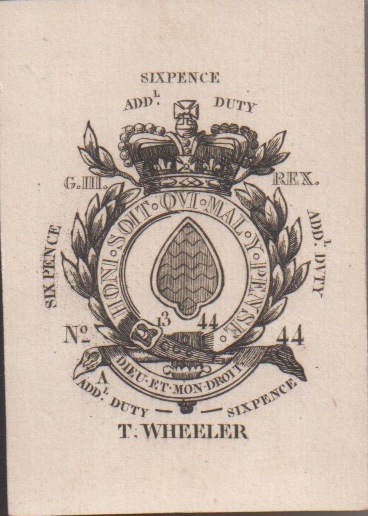
Although this AS looks genuine, there are tell-tale signs of forgery, such as the elongated numbers, 3 & 4, and the lack of shading inside the garter.
There are a further two examples of fakes in the Bibliothèque Nationale, which seem to be French in origin, which have courts based on Hunt's HB1. One has a forged Old Frizzle, the other is only a set of sample courts by Alphonse Arnoult, so may be just a copy, as there is no AS to give us any clues. The latter is a less good copy of the style of Hunt's/Bancks's courts.
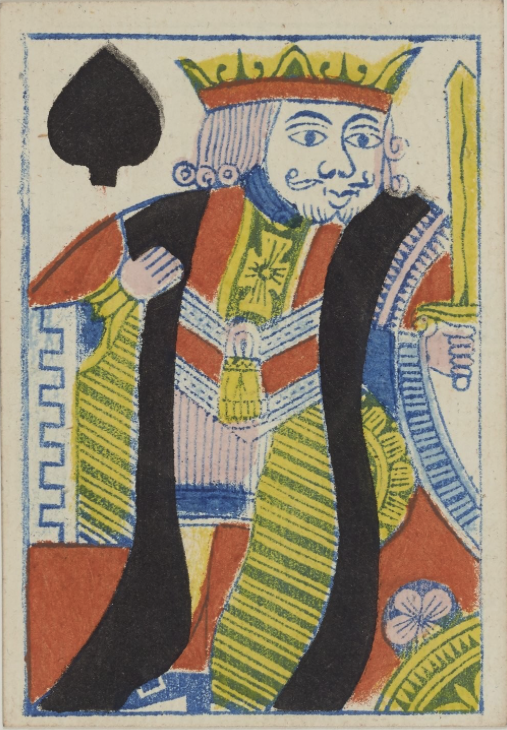







Other ways of tax-avoidance
The other two main ways of avoiding paying tax on cards were (i) cutting the corner off good cards to make 'waste' and providing a hand-made AS or blank, and (ii) selling second-hand cards made up of oddments.
Below is an example of a Reynolds pack with the corners off and a hand-drawn AS.

For a discussion of mixed packs, see page 39.
By Ken Lodge
United Kingdom • Member since May 14, 2012 • Contact
I'm Ken Lodge and have been collecting playing cards since I was about eighteen months old (1945). I am also a trained academic, so I can observe and analyze reasonably well. I've applied these analytical techniques over a long period of time to the study of playing cards and have managed to assemble a large amount of information about them, especially those of the standard English pattern. About Ken Lodge →

Leave a Reply
Your Name
Just nowRelated Articles
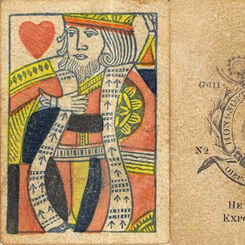
The Henry Hart Puzzle
Explore the intricate history and unique design variations of Henry Hart's playing cards, tracing th...
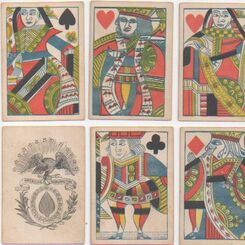
75: Early American cards
An overview of some of the early cards made in the United States.
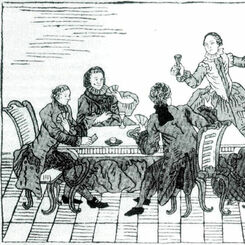
Russian Playing Card History - From the Beginnings to 1917
An in-depth review of the history of card-playing, gambling, legislation, manufacture and taxation o...
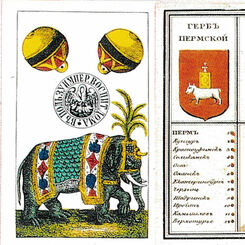
Russian Playing Card Monopoly
The Russian Playing Card Monopoly was established in March 1798 with all revenue going to support th...
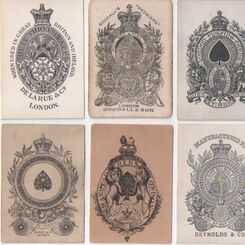
72: The Ace of Spades
In standard English packs the Ace of Spades is associated with decorative designs. This is a histori...
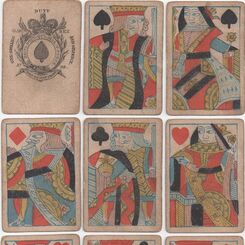
71: Woodblock and stencil: the hearts
A presentation of the main characteristics of the wood-block courts of the heart suit.
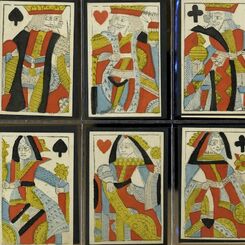
70: Woodblock and stencil : the spade courts
This is a presentation in a more straight forward fashion of the work done by Paul Bostock and me in...
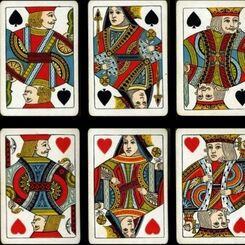
66: Adverts and related material 1862-1900
Some further material relating to cards from nineteenth and twentieth century periodicals.
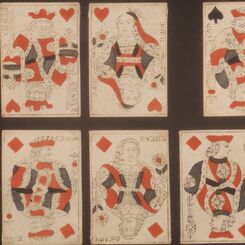
64: The descendants of the French regional patterns: 2
A continuation oF the development of the off-spring of the Paris patterns and a few examples of how ...
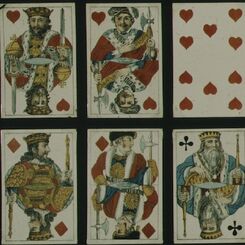
63: The descendants of the French regional patterns: 1
A great many regional patterns were exported from France and subsequently copied elsewhere. Some of ...
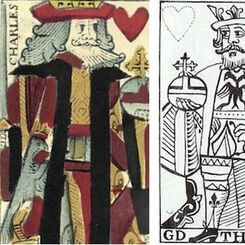
61: French regional patterns: the kings
On page 11 I illustrated several examples of the regional French patterns from Sylvia Mann's collect...
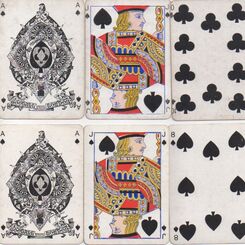
60: Some less common Goodall packs, 1875-95
There are some interesting packs from Goodall in the last quarter of the 19th century.
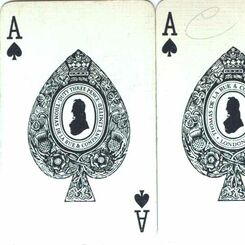
De la Rue’s 125th anniversary
In around 1955 De la Rue introduced a new coloured joker and a series of aces of spades with a silho...
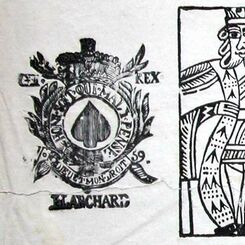
Fake Blanchard Ace of Spades
Fake Blanchard Ace of Spades with court cards based on Hall.
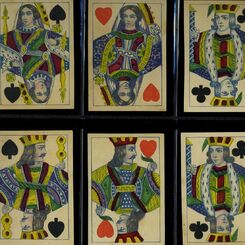
21: Belgian Makers: Brepols and Biermans
Brepols started making playing cards in 1826, although he had been in the printing trade since 1800....
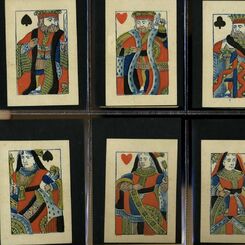
19: 19th Century Breaks with Tradition - Unusual versions of the Standard English Pattern
The centuries-long tradition of English court cards was subject to misinterpretation and in some cas...
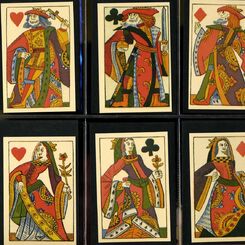
1: Playing Cards and their History: An Introduction and some links to other sites
What was considered the first mention of playing cards in England is in 1463 when Edward I banned th...
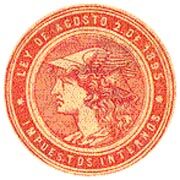
Argentina Tax Stamps on playing cards 1895-1968
Argentina Tax Stamps on playing cards 1895-1968
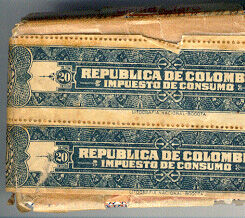
Impuesto de Timbre para Naipes
EL CONGRESO DE COLOMBIA. LEY 69 DE 1946, por la cual se elevan las tarifas de algunos impuestos indi...
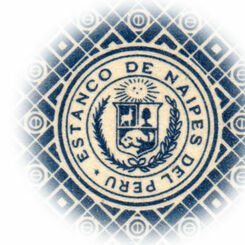
Estanco de Naipes del Perú
In October 1888 the Republic of Peru Congress passed Law no.26 establishing taxes on playing cards, ...
Most Popular
Our top articles from the past 60 days


 Your comment here. Your comment here. Your comment here. Your comment here. Your comment here. Your comment here. Your comment here. Your comment here. Your comment here. Your comment here. Your comment here. Your comment here. Your comment here. Your comment here. Your comment here. Your comment here. Your comment here. Your comment here. Your comment here. Your comment here. Your comment here. Your comment here. Your comment here. Your comment here. Your comment here. Your comment here. Your comment here. Your comment here. Your comment here. Your comment here. Your comment here. Your comment here.
Your comment here. Your comment here. Your comment here. Your comment here. Your comment here. Your comment here. Your comment here. Your comment here. Your comment here. Your comment here. Your comment here. Your comment here. Your comment here. Your comment here. Your comment here. Your comment here. Your comment here. Your comment here. Your comment here. Your comment here. Your comment here. Your comment here. Your comment here. Your comment here. Your comment here. Your comment here. Your comment here. Your comment here. Your comment here. Your comment here. Your comment here. Your comment here.




















